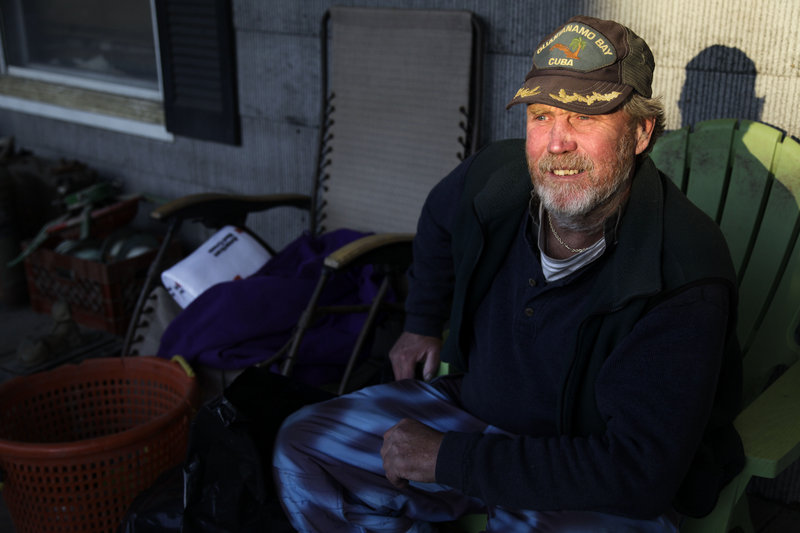NEW YORK – A month after Sandy’s floodwaters swept up his block, punched a hole in his foundation and drowned his furnace, John Frawley still has no electricity or heat in his dilapidated home on the Rockaway seashore.
The 57-year-old, who also lost his car and all his winter clothes in the flood, now spends his nights shivering in a pair of donated snow pants, worrying whether the cold might make his chronic heart condition worse.
“I’ve been coughing like crazy,” said Frawley, a former commercial fisherman disabled by a spine injury. He said his family doesn’t have the money to pay for even basic repairs. So far, he has avoided going to a shelter, saying he’d rather sleep in his own home.
“But I’m telling you, I can’t stay here much longer,” he said.
City officials estimate at least 12,000 New Yorkers are trying to survive in unheated, flood-damaged homes, despite warnings that dropping temperatures could pose a health risk.
The chill is only one of the potential environmental hazards that experts say might endanger people trying to resume their lives in the vast New York and New Jersey disaster zone.
Uncounted numbers of families have returned to coastal homes that are contaminated with mold, which can aggravate allergies and leave people perpetually wheezing. Others have been sleeping in houses filled with construction dust, as workers have ripped out walls and flooring. That dust can sometimes trigger asthma.
But it is the approaching winter that has some public health officials worried most. Nighttime temperatures have been around freezing and stand to drop in the coming weeks.
New York City’s health department said the number of people visiting hospital emergency rooms for cold-related problems has already doubled this November, compared with previous years. Those statistics are likely only the proverbial tip of the iceberg.
Mortality rates for the elderly and chronically ill rise when people live for extended periods in unheated apartments, even when the temperature is still above freezing, said the city’s health commissioner, Dr. Thomas Farley.
“As the temperatures get colder, the risk increases,” he said. “It is especially risky for the elderly.”
Since the storm, the health department has been sending National Guard troops door to door, trying to persuade people to leave cold homes until their heating systems are fixed.
The city is also carrying out a plan to spend hundreds of millions of dollars helping residents make emergency repairs needed to restore their heat and hot water.
Convincing people that they could be endangering themselves by staying until that work is complete, though, isn’t always easy.
Send questions/comments to the editors.



Success. Please wait for the page to reload. If the page does not reload within 5 seconds, please refresh the page.
Enter your email and password to access comments.
Hi, to comment on stories you must . This profile is in addition to your subscription and website login.
Already have a commenting profile? .
Invalid username/password.
Please check your email to confirm and complete your registration.
Only subscribers are eligible to post comments. Please subscribe or login first for digital access. Here’s why.
Use the form below to reset your password. When you've submitted your account email, we will send an email with a reset code.